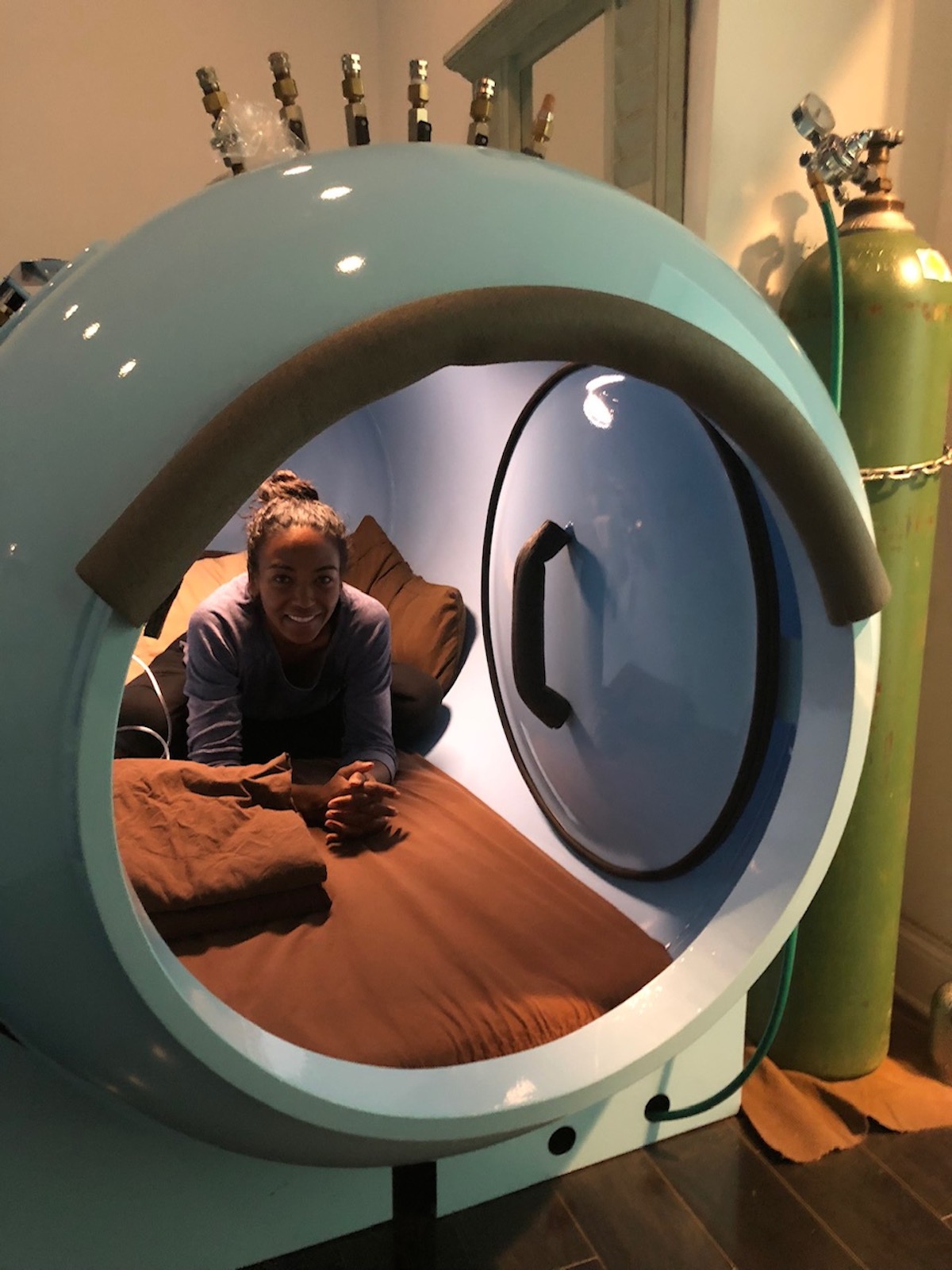Cancer Treatment Decision-making
- Former MTV host Ananda Lewis, 51, recently revealed her nearly six-year-long breast cancer journey turned the page after progressing to stage 4 (metastatic) breast cancer.
- Before her diagnosis, she had never had a mammogram, fearing radiation exposure. She has since become an advocate for prevention and encourages women to schedule mammograms immediately. Experts encourage annual breast cancer screenings to begin at age 40.
- Lewis initially chose to bypass traditional cancer treatment regimens such as a mastectomy (removal of the breast) as her doctor recommended. She decided to “keep her tumor” and focus on diet and lifestyle changes instead. However, now faced with stage 4 cancer, Lewis questions if she “should have” gotten the surgery.
- Traditional cancer treatment may include surgery, chemotherapy, or radiation regimens. However, they often come with harsh side effects. Non-traditional (complementary) treatments may include herbal supplements, homeopathic drugs, or a changed diet and lifestyle.
- Research published in the medical journal JAMA Oncology suggests patients who bypass traditional cancer treatments face a “higher risk of death.”
Your choice about treatment are yours. Yet oncologists say too many people are being lured into selecting unproven alternative therapies with tragic consequences. Former ‘90s era MTV host Ananda Lewis, 51, is nearly six years into her breast cancer journey after being diagnosed in early 2019 with stage 3 breast cancer. Now, she recently learned her cancer has progressed to metastatic (stage 4), meaning it’s spread to other parts of her body.
The former “TRL” and “Hot Zone” host has been open about choosing a non-traditional route to cancer treatment which includes her decision to bypass a double mastectomy (removal of both breasts) as her doctor recommended.
Read More
“I decided to keep my tumor and try to work it out of my body a different way. Looking back on that, I go, ‘You know what? Maybe I should have,’” as Lewis weighed her initial decision to bypass getting a mastectomy.
Lewis’ cancer journey has sparked conversations among some oncologists who promote traditional lines of care for breast cancer, which often include a form of surgery followed by possible chemotherapy or radiation or a combination of treatment methods.
Among those speaking out is Dr. Liz O’Riordan, a retired breast surgeon who ended up getting breast cancer three times.
This is what can happen when people choose alternative cancer tretament instead of mainstream conventional therapy.
Ananda Lewis was diagnosed with breast cancer in 2020. She decided not to have surgery and instead chose to eliminate toxins, change her diet etc.
Sadly her… pic.twitter.com/a5J2c41nw3
— Dr Liz O’Riordan (@Liz_ORiordan) October 16, 2024
“Ananda Lewis was diagnosed with breast cancer…she decided not to have surgery and instead chose to eliminate toxins, change her diet, etc. Sadly, her cancer has spread. She has stage 4 disease,” O’Riordan said in a social media post.
“I’m not criticizing her decision. She did what was right for her at the time. But, if she was misled by functional, naturopathic, and homeopathic doctors who promised her a cure, that makes my blood boil,” O’Riordan added.
Helping You Better Understand Late-Stage Breast Cancer Treatments
- CD4/CD6 Inhibitors For Metastatic Breast Cancer — What Are The Side Effects?
- Do You Have HER2-Positive Metastatic Breast Cancer? Here’s A Breakdown Of Some Of Your Treatment Options
- FDA Approves Diagnostic Test to Identify Patients with Metastatic Breast Cancer Expressing Low Levels of HER2
- HER2-Positive Metastatic Breast Cancer Treatment Options Explained
- How To Treat Metastatic Breast Cancer: The Drug Trodelvy Shows A Promising Boost In Survival Rates
- Chemo Plus Immunotherapy for Metastatic Triple-Negative Breast Cancer
- PARP Inhibitors Provide New Promise for Certain Metastatic Breast Cancers
- Metastatic Triple-Negative Breast Cancer Treatments To Consider
Understanding Non-Traditional Treatment for Cancer
Traditional treatment methods for cancer may include surgery, chemotherapy, or radiation regimens. Understandably, these treatments are not easy to deal with as they often bring grueling side effects from hair loss to diarrhea. Some patients opt for non-traditional treatments to avoid these side effects, while others bypass traditional therapy for other reasons. Examples of non-traditional treatments may include relying on herbal supplements, homeopathic drugs, or a changed diet and lifestyle.
A study published in the medical journal JAMA Oncology focused on complementary medicine, refusal of conventional cancer therapy, and patient survival. The researchers surmised that patients are more likely to die when they rely on non-traditional cancer treatments.
WATCH: Complementary Treatment
“We know that many, many patients out there are using complementary and alternative medicine, but they’re not talking with their providers about it,” says Dr. James Yu, a radiation oncologist at Yale Cancer Center who led the study.
Yu and his colleagues examined information collected from 1.9 billion people in the National Cancer Database. They found that people who chose complementary medicine for cancer treatment were more likely to be female, younger, affluent, well-educated, and privately insured.
People who chose complementary medicine were also more likely to refuse some conventional treatments like surgery, chemotherapy, radiotherapy, and hormone therapy, Yu says. Unfortunately, these people had a two-fold greater risk of death compared with patients who did not use complementary medicine.
Yu stresses that using complementary therapies to improve patient’s quality of life should be okay as long as they do not interfere with conventional medicines and help them feel better.
Ananda’s Ongoing Breast Cancer Journey
Ananda Lewis discovered she had stage breast cancer in January 2019 after performing a self-exam and found a lump. A biopsy later confirmed her diagnosis and revealed the cancer had spread to her lymph nodes.
Women are encouraged to do regular self-exams to become familiar with how their breasts feel normally, so when something unusual like a lump does form, it can be easily detected. A self-exam includes pressing your fingertips along your breast in a circular motion.
WATCH: Getting to Know Your Breasts with Self-Exams.
Interestingly, Lewis says her mom religiously received an annual mammogram. However, the former TV star had never had a mammogram before she was diagnosed with cancer.
The medical community has a consensus that women between 45 and 54 have annual mammograms. However, an independent panel of experts called the U.S. Preventive Services Task Force (USPSTF) is saying that women should start getting mammograms every other year at the age of 40, suggesting that this lowered the age for breast cancer screening could save 19% more lives. For women aged 55 and older, the American Cancer Society recommends getting a mammogram every other year. However, women in this age group who want added reassurance can still get annual mammograms.
Lewis admits she struggled to tell her family about her diagnosis when she learned she had cancer.
“There was a lot of shame and embarrassment around that,” Lewis previously told BET.com.

“I have a sister who’s a physician and cousins who are doctors; I was like, ‘Oh my God, they’re gonna think I’m so dumb.’ But I had to power through the shame,” Lewis continued.
Lewis ultimately decided to share her diagnosis a year later on her Instagram channel because she wanted to help other women who were afraid to share a diagnosis with loved ones.
“It was a huge relief. But it wasn’t easy to post that. I wasn’t sure what the feedback was going to be. I wanted to help other women by sharing the mistake I made,” Lewis said.
Since Lewis’ diagnosis, she’s become a staunch advocate for women to get annual mammograms and early detection.
What Awaits Ananda Amid Metastatic Breast Cancer Diagnosis
Metastatic breast cancer occurs when cancer cells spread from the breast to other parts of the body, such as the bones, liver, lungs, or brain.
While stage 4 breast cancer is not curable, several treatment options exist to help improve the quality of life for women battling the disease.
WATCH: Understanding Stage 4 Breast Cancer.
Although stage 4 metastatic breast cancer is incurable, it can be managed. Today, patients have many different options, including standard therapies, whether it be chemotherapy or hormonal treatments, or a new targeted medicine based on genetic sequencing of the cancer that may have been performed — meaning, trying to understand the mutations that are found in the cancer and are there any specific drugs that could be targeted for that mutation.
SurvivorNet experts stress that late-stage breast cancer is not one disease but many different diseases. Your metastatic breast cancer treatment will depend on several factors, like your overall health, genetics, the biology of the tumor, and more.
Learn more about SurvivorNet's rigorous medical review process.

